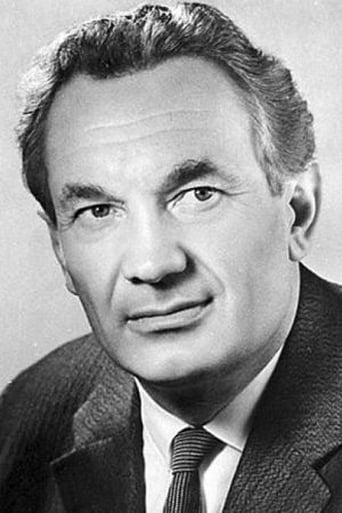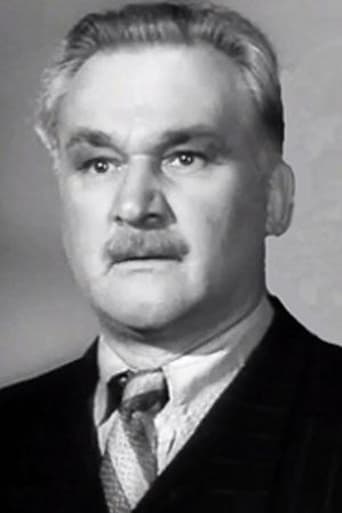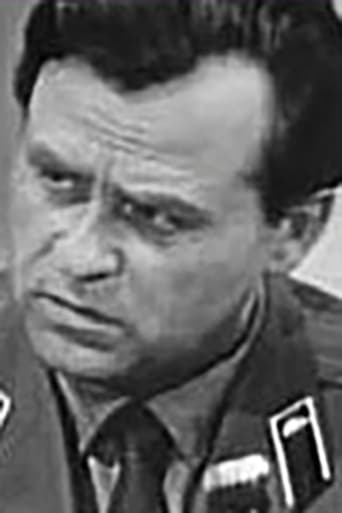Cubussoli
Very very predictable, including the post credit scene !!!
BoardChiri
Bad Acting and worse Bad Screenplay
Jenna Walter
The film may be flawed, but its message is not.
Philippa
All of these films share one commonality, that being a kind of emotional center that humanizes a cast of monsters.
Woodyanders
As everyone already knows, Roger Corman got his hands on an ambitious Russian space opera and had a then unknown Francis Ford Coppola drastically re-edit it into a 64 minute piece of pure schlock complete with poor dubbing, cornball narration, and, most notoriously, a couple of cheesy looking monsters that hilariously resemble male and female genitalia. The sequence with these two ridiculous creatures kicks the picture over the delightfully campy goal post as these obscene things engage in a pathetic fight for a whopping two minutes. As for the rest, the special effects are quite good and convincing for their time, the sets are likewise impressive, the space rescue story manages to generate real suspense and excitement, and there are moments of striking visual splendor that neatly predate "2001: A Space Odyssey." Moreover, the central premise about two great nations fiercely competing against each other over which one will reach Mars first nicely captures the tension of the Cold War era. A fun cheapie quickie take on a foreign sci-fi feature.
keith-moyes-656-481491
I saw this movie in its UK premier at the National Film Theatre. It is the original Russian version with subtitles. It was 67 minutes long and this seems about right for its slim story. I doubt if the rumours of a two hour version are true.The print was in decent shape, with only the occasional scratch, but the image quality wasn't great. I don't know if this was due to the mediocre quality of the original film stock, or was simply because this was only a 16mm print.If you only know of this film from Corman's Battle Beyond the Sun and are anxious to see it in its original form, don't get your hopes up. The special effects and production design are 'state of the art' for 1959 but everything else is quite poor.The story is very simple but is OK in its general outline.It starts with a writer being shown around a Soviet space exhibition. He sits down at a desk looking thoughtful and the rest of the movie is his daydream.An American rocket lands on a Soviet space station on its way to Mars. The Americans learn that the Russians are also planning a Mars mission and are ordered to set off immediately in order to beat them there. In their hurry to take off they accidentally injure a Russian cosmonaut.Because they have set off before Mars is in the correct position, they run out of fuel. The Russians heroically shelve their own Mars attempt in order to mount a rescue mission. The rescuers encounter a meteor shower that may or may not have some effect on their spaceship. Eventually they pick up the Americans but also run out of fuel. They land on an asteroid called Icarus, for no obvious reason. The Russians then send them an unmanned fuel rocket which crashes on Icarus, also for no obvious reason. A second fuel rocket is sent and does manage to land safely, but one of the Russians dies (you guessed it) for no obvious reason.This all sounds fair enough, but the movie makers had only the most elementary idea of how to tell a story in cinematic terms.The screenplay is very lumpy. It lingers on scenes of marginal importance (and interest) and then omits crucial scenes altogether, so the story jerks forward with scant regard for either temporal or spatial continuity. Basic information, needed to follow what is actually happening on the screen, is given in the wrong place or is too cryptic to really make sense (poor sub titles didn't help). Scenes frequently begin without any preparation and it is only half-way through that anyone bothers to explain what is going on. Sometimes they never do and the visuals are too opaque to fill in the gaps.The director is more concerned with creating beautifully composed images than generating atmosphere and tension - or even just telling the story. Scenes begin with pointless lingering close ups of people looking thoughtful. Sometimes we learn what they were thinking and sometimes not. They then wander aimlessly around the (often superb) sets with no point or purpose before clustering together and striking poses that might look good in stills but make no dramatic sense. The actors are left to fend for themselves.In Hollywood it has often been said that when a good director dies he becomes a cinematographer. If Mikhail Karzhukov was ever a good director he must have been dead long before this movie was made.The overall impression is that Nebo Zovyot is not a narrative movie so much as a series of 'tableau vivants'. It resembles an early silent movie, where the inter titles explain what is going on and the subsequent scenes are merely illustrations - except that here there are no inter titles.Interestingly, the other East European SF films made around this time which I have now seen in their original versions, Mechte Navstrechu, Planeta Burg, Der Schwiegende Stern and Ikarie-XB1, are all more or less the same. This suggests that Soviet Bloc film makers were working in a bubble with very little access to movies made elsewhere. Stylistically, they were all stuck in the Silent era, when Soviet film-making had been cutting edge.I know some people might accuse me of being culturally blinkered: trying to impose Western story-telling conventions on a film made in a different cinematic tradition, with different aesthetic values and artistic priorities. I have considered this possibility.They are wrong.PS: Many aspects of this review are even more pertinent to Mechte Navstrechu, the other SF film premiered in this NFT season.PPS: The British Film Institute is currently negotiating with a Danish company to release these old Soviet era SF films on DVD (hopefully with full digital restoration) so many other people will be able to judge them for themselves.
dbborroughs
The American version of this film concerns a race into space and was assembled by Roger Corman who cut up the original Soviet film and then added some footage of his own. From the looks of things Corman took a ponderous and very serious film about a trip to the stars and made it some what less serious. Certainly the gravity of the performances of the original remain but at the same time introduction of the battling monsters in the final twenty minutes changes everything. Honestly the only real reason to watch this sleep inducing film is the two monsters which battle it out while the astronauts watch. The creatures are nothing if not monstrous to look at and possess forms that are rather unique, namely less than the less than veiled shapes of genitalia. Clearly the filmmakers assigned by Corman were bored and I doubt they really ever thought they'd actually get away with what they did, but there it is on the screen, who monsters locked in a vicious battle thats in actuality a less than subtle commentary of the male female dynamic. I don't think I ever really paid any attention to their shape for the longest time, it wasn't until I had it pointed out to me that the film suddenly became so much more interesting. Unfortunately the monsters are only briefly seen at the end, but in an otherwise somber film, their inclusion is enough to watch the film if you are a monster nut like me.
jbrotychoorion
Saw this long ago late one night on an old UHF (read second-rate) TV channel. Its was another attempt by a cheapo studio to make a quick buck by grafting cheap American footage onto a cheaply purchased Russian sci-fi film , and foisting it onto an unsuspecting American public, probably as the second of a double feature. The plot , which was probably drastically altered from the original Russian film, concerns a space race between two antagonistic regions on Earth, which I believe they referred to as North Hemis and South Hemis. I think the goal was mars , but (SPOILER ALERT) I don't think they make it. One side, probably the Americans in the original, attempt to make it there first in a risky effort and crash on one of Mars' moons (dont ask me which one). The other side rescues them and they all become friends, the message being one of peaceful coexistence in exploration of the stars....Most of the film is a reediting of the original Russian film, and much of that footage is interesting. The lift off and mission control scenes are well handled , and some of the space flight scenes have a 2001-like quality. There definitely was some money spent. The big American contribution is a laughable fight between monsters on the martian moon. One monster looked like a banana, and the other like a tomato. Who knows what they were thinking. Maybe it was to liven up the original film, which apparently was a straight-forward, realistic depiction of a trip to Mars, minus boogy men. All I can think is that Coppola, under the name Thomas Colchart, accepted this assignment to get his foot in the door......




